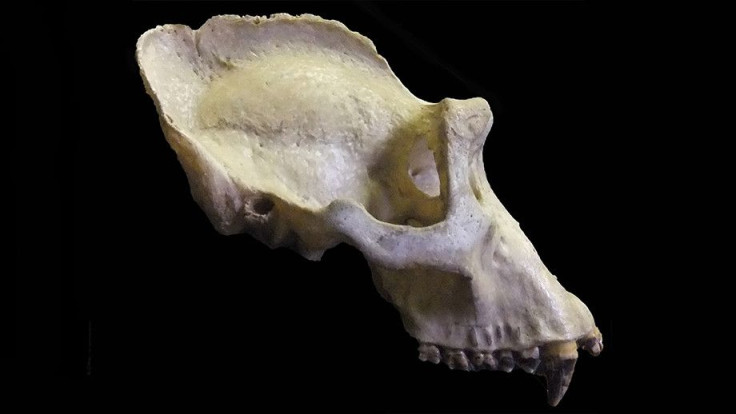The Size Of This Gorilla Bone Holds The Secret Of Ancient Human Sex Practices

What was sex like for ancient humans? Fossils can only tell us so much about the lives of our ancestors, but it turns out that a certain bone may reveal a secret about extinct mating practices.
The key to the mystery is part of a gorilla or orangutan skull called the sagittal crest, a ridge of bone running from front to back at the top of the cranium that sort of looks like a tiny bone mohawk. Certain animals have these crests, and so did some prehistoric human relatives. Although scientists have believed the bone protrusion is linked to eating — assisting the muscles that connect all the way down to the jaw to help in chewing — new research suggests it plays a sexual role too.
For a study in the Journal of Anatomy, scientists analyzed how the size of the sagittal crest increased with age and how its development is related to sex differences. For gorillas and orangutans, the crest’s size “cannot be solely explained” by chewing needs and they may “form in response to sexual selection and may play a role in social signaling.”
Read: Ancient Mammoth Hunters Make This Country’s Men the Tallest in the World
It would work like this: A female prefers a male with a sagittal crest of a certain larger size, so she chooses that sort of guy as a sexual partner.
“And if sagittal crest size and social behavior are linked in this way, then we could potentially establish that some of our extinct human relatives had a gorilla-like social system,” lead researcher Katharine Balolia said in a statement from Australian National University. “This would be a first, because otherwise the human fossil record provides precious little about how our extinct relatives chose their mates.”
According to the research, the male gorillas develop their sagittal crests at a time in their lives that can be linked to human puberty, after their wisdom teeth come in and as they are becoming dominant in their social circles. With the orangutans, they reach dominance later in life, so their crests come in later as well.
If this bone evidence tells us more about how extinct humans lived — their social structures rather than just what they looked like — it wouldn’t be the first bone to do that. Another recent study, into a bird bone that had been decorated by a Neanderthal, gave us a glimpse of how those extinct human ancestors were thinking because it showed a preference for even patterns and represented something a Neanderthal did for aesthetic reasons rather than necessity.
See also:
Ancient American Teen Gave Birth, Then Fell to Her Death
Ancient Carvings Depict Devastating Comet Crash
© Copyright IBTimes 2024. All rights reserved.





















